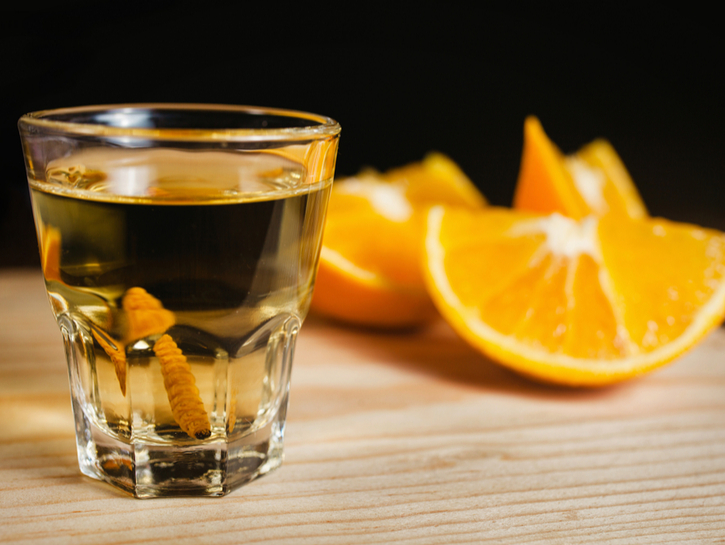Tequila has been a frat staple for a while, but its classier cousin mezcal has been taking over the liquor scene lately. And how could it not? It takes tequila’s wild, “party” image and adds some complexity and a dash of sophistication, which can lure anyone with a taste for fine spirits and cocktails. But what is mezcal? And what sets it apart from tequila?
What Is Mezcal?
Tequila is a type of mezcal, just like scotch is a type of whiskey. All tequilas are mezcals, but not all mezcals are tequilas. This may come as a surprise — after all, mezcal has a more exclusive status while tequila is considered the most generic way to a throbbing hangover. In short, mezcal has a bitter taste that is similar to tequila, but smokier and richer.

Brent Hofacker/Shutterstock
Mezcal vs. Tequila: Origins
Agave is a desert plant that resembles a cactus. Mezcal is made from 28 different kinds of agave, the most popular one being espadin. By law, tequila can only be made from the blue agave plant, which supplies at least 51 percent of tequila’s fermented sugars. Mezcal, on the other hand, has to have at least 80 percent agave sugar in its contents. Because tequila is made exclusively from blue agave, its taste can considered fairly one-dimensional. Mezcal’s variety provides nuanced richness and unique complexities.
Another key difference between mezcal and tequila is how the drinks are bottled. While only premium tequila has to be bottled in Mexico, it is a requirement for all mezcals — perhaps because mezcal is of higher quality due to its agave contents. The drink is produced in eight different Mexican states, with Oaxaca producing 90 percent of the total mezcal supply.

Jesus Cervantes/Shutterstock
Mezcal vs. Tequila: Production
One of the most crucial differences between tequila and mezcal lies in the production process. Both tequila and mezcal are made from the heart of the agave plant, called piña. Blue agave takes at least five years to mature, while espadin takes eight years or more.
Essentially, tequila is steamed while mezcal is roasted. To make tequila, producers steam the piñas in ovens above ground for anywhere between 24 and 48 hours. This converts the piñas‘ sap into fermented sugar. The oven is then turned off and the piñas are left to cool for an additional 16 to 48 hours. The juice is then extracted and begins the fermentation process.
Making mezcal is a much different and more personal approach.The piñas are buried in a stone pit — a fire is started at the base and covered in stones, and when the stones get red-hot the piñas are place on top to roast. The pit is covered in agave leaves and fibers and the piñas are left to slowly roast for four days. Once roasted, the fruit is crushed by a wheel pulled by a horse or a donkey, squeezing out the nectar. The juice is then fermented and distilled twice.

Jose de Jesus Churion Del/Shutterstock
Mezcal vs. Tequila: How To Drink It
Tequila has become the central element of two of the most widespread cocktails: Tequila Sunrise and the margarita. The reason why tequila works well in those cocktails is its relatively universal taste, meaning that like vodka, plain tequila tastes more or less the same. Its relative harshness is balanced out by the fruitier components of the cocktail, such as lime and orange juice, triple sec liqueur and grenadine bar syrup. The combination makes for refreshing, tasty cocktails with fruity flavors and a spicy kick.

Teri Virbickis/Shutterstock
Mezcal can also work great in cocktails when mixed right, but this drink is best when consumed straight. Mezcal is much more complex, rich and nuanced than tequila — the liquor has been compared to wine because of its flavor range and complexity. Like with drinking wine, many mezcal connoisseurs argue that the drink it best enjoyed slowly instead of throwing it back like a tequila shot. But if you can’t stomach sipping on straight mezcal, try cocktails such as the Oaxaca Old-Fashioned or the Tia Mia.

Joshua Resnick/Shutterstock
